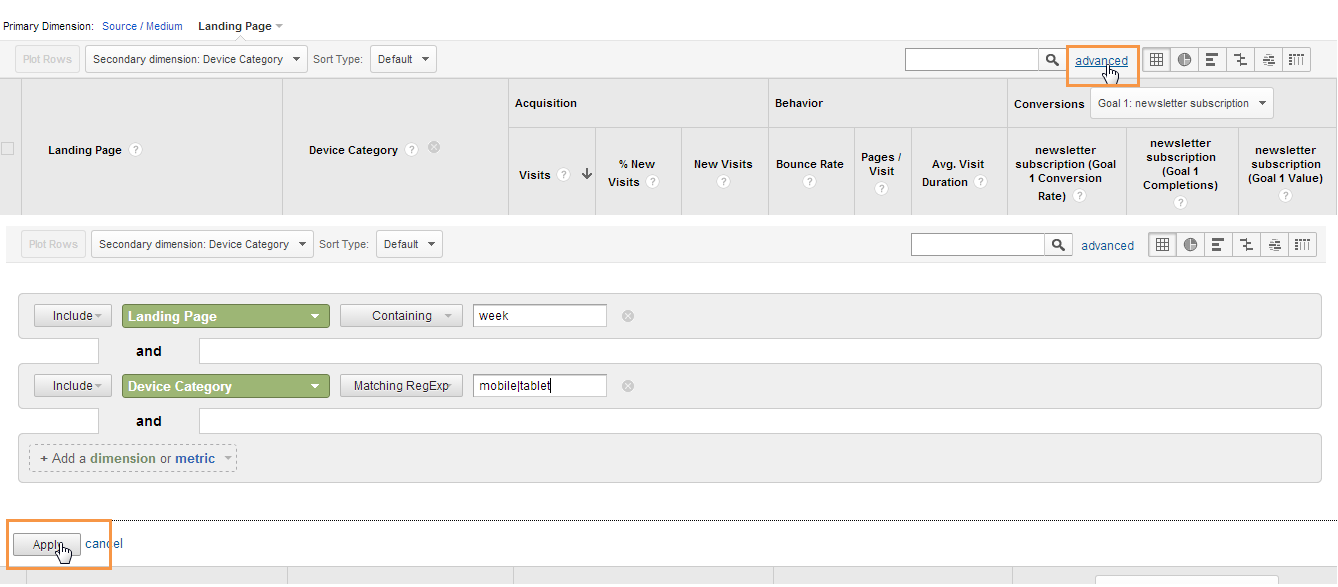Google Analytics Mastery: Unveiling the Possible of Secondary Dimension
Unlocking the Power of Additional Measurement Analytics for Boosted Information Insights and Decision-Making
In the realm of data analytics, primary dimensions frequently take the spotlight, yet the real depth of insights exists within the world of secondary dimensions. By using the power of second measurement analytics, organizations can unveil hidden fads, discover correlations, and remove a lot more significant conclusions from their information.
Relevance of Additional Dimensions
Discovering the relevance of secondary measurements in analytics reveals the hidden layers of information insights crucial for educated decision-making in different domains. Additional dimensions supply a deeper understanding of key data by supplying extra context and viewpoints. By integrating second measurements right into analytics, organizations can remove much more detailed and nuanced insights from their datasets.
One key relevance of secondary measurements is their ability to section and categorize key data, enabling a more in-depth evaluation of details subsets within a dataset. This division enables services to identify patterns, patterns, and outliers that could not be apparent when checking out the information overall. Furthermore, additional measurements aid in discovering relationships and dependencies between various variables, bring about even more accurate forecasting and predictive modeling.
Furthermore, secondary dimensions play a crucial role in improving data visualization and reporting. By adding additional dimensions to visualizations, such as graphs or charts, analysts can produce a lot more interesting and informative depictions of information, assisting in much better communication of findings to stakeholders. In general, the combination of additional dimensions in analytics contributes in unlocking the complete possibility of information and driving evidence-based decision-making.
Secret Benefits of Utilizing Additional Dimensions
Making use of additional measurements in analytics provides companies a calculated advantage by increasing the depth and granularity of information understandings. By exploring information using second dimensions such as time, place, device type, or customer demographics, organizations can discover patterns, trends, and connections that might otherwise stay hidden.
Furthermore, the use of second measurements boosts the context in which key information is analyzed. By leveraging second measurements in analytics, companies can harness the complete possibility of their information to drive far better decision-making and attain their organization purposes.
Advanced Information Evaluation Strategies
A deep dive right into sophisticated information analysis methods reveals sophisticated methods for extracting valuable insights from intricate datasets. One such strategy is equipment understanding, where formulas are utilized to identify patterns within data, forecast end results, and make data-driven choices. This technique enables the automation of logical version structure, allowing the processing of huge quantities of data additional resources at a faster rate than typical techniques.
Another advanced strategy is predictive analytics, which uses analytical formulas and artificial intelligence strategies to forecast future outcomes based upon historical information. By examining patterns and trends, businesses can prepare for customer actions, market patterns, and potential threats, equipping them to make aggressive choices.
Furthermore, message mining and sentiment evaluation are important strategies for drawing out insights from disorganized data resources such as social media remarks, customer evaluations, and study actions. By analyzing message information, organizations can recognize client point of views, identify arising trends, and improve their solutions or items based on responses.
Enhancing Decision-Making Through Additional Measurements

Enhancing decision-making via secondary dimensions allows services to make even more informed and targeted tactical options. By segmenting consumer information based on second measurements like acquiring background or involvement degrees, business can customize their advertising methods to certain target market sections, leading to enhanced conversion rates and customer satisfaction. Secondary measurements can aid determine correlations and i was reading this relationships in between various variables, enabling organizations to make data-driven choices that drive growth and profitability.
Implementing Second Dimension Analytics
When integrating secondary measurements in analytics, companies can unlock much deeper insights that drive calculated decision-making and enhance general efficiency. This entails comprehending the specific inquiries the company seeks to respond to and the information points needed to resolve them.
Moreover, companies should take advantage of progressed analytics devices and technologies to improve the procedure of including secondary dimensions. These tools can automate information handling, evaluation, and visualization, allowing organizations to concentrate on translating understandings instead of hand-operated data manipulation.
Final Thought
In final thought, additional dimension analytics play an essential duty in boosting information understandings and decision-making procedures. By using innovative information analysis methods and carrying out secondary dimensions efficiently, companies can open the power of their information to drive tactical service decisions. The vital advantages of making use of secondary dimensions can not be overstated, as they supply a deeper understanding of information patterns and connections. It is crucial for organizations to take advantage of additional measurement analytics to remain competitive in today's data-driven landscape.
In the realm of data analytics, key measurements typically take the spotlight, yet the real depth of understandings exists within the realm of second measurements.Utilizing second measurements in analytics provides companies a calculated advantage by boosting the deepness and granularity i loved this of data understandings. By leveraging secondary measurements in analytics, organizations can harness the complete capacity of their data to drive far better decision-making and achieve their organization goals.
Implementing information validation procedures and regular audits can assist preserve information high quality and integrity.
By using innovative data evaluation methods and applying additional measurements efficiently, companies can unlock the power of their data to drive critical company choices.